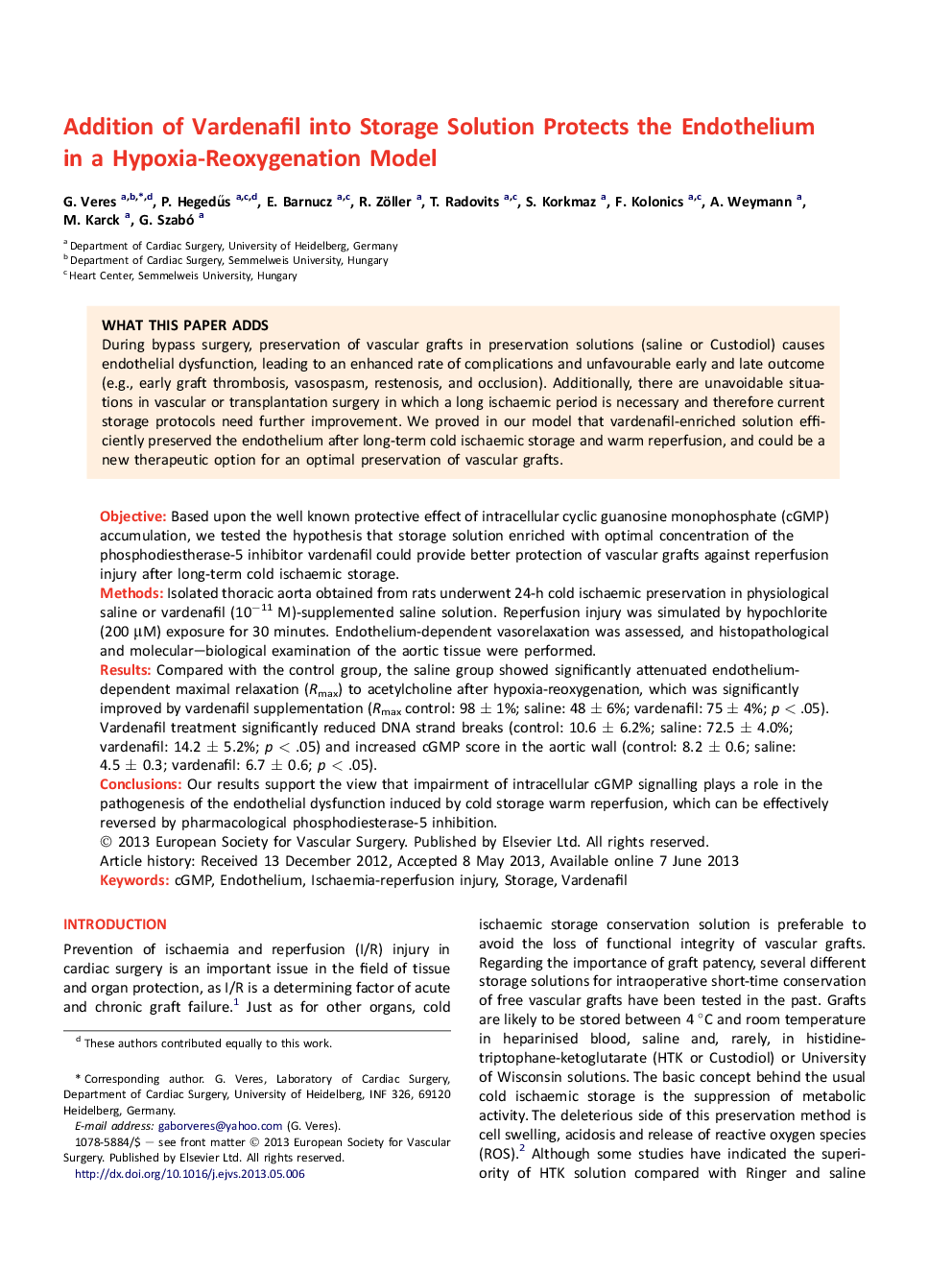| Article ID | Journal | Published Year | Pages | File Type |
|---|---|---|---|---|
| 2912763 | European Journal of Vascular and Endovascular Surgery | 2013 | 7 Pages |
ObjectiveBased upon the well known protective effect of intracellular cyclic guanosine monophosphate (cGMP) accumulation, we tested the hypothesis that storage solution enriched with optimal concentration of the phosphodiestherase-5 inhibitor vardenafil could provide better protection of vascular grafts against reperfusion injury after long-term cold ischaemic storage.MethodsIsolated thoracic aorta obtained from rats underwent 24-h cold ischaemic preservation in physiological saline or vardenafil (10−11 M)-supplemented saline solution. Reperfusion injury was simulated by hypochlorite (200 μM) exposure for 30 minutes. Endothelium-dependent vasorelaxation was assessed, and histopathological and molecular–biological examination of the aortic tissue were performed.ResultsCompared with the control group, the saline group showed significantly attenuated endothelium-dependent maximal relaxation (Rmax) to acetylcholine after hypoxia-reoxygenation, which was significantly improved by vardenafil supplementation (Rmax control: 98 ± 1%; saline: 48 ± 6%; vardenafil: 75 ± 4%; p < .05). Vardenafil treatment significantly reduced DNA strand breaks (control: 10.6 ± 6.2%; saline: 72.5 ± 4.0%; vardenafil: 14.2 ± 5.2%; p < .05) and increased cGMP score in the aortic wall (control: 8.2 ± 0.6; saline: 4.5 ± 0.3; vardenafil: 6.7 ± 0.6; p < .05).ConclusionsOur results support the view that impairment of intracellular cGMP signalling plays a role in the pathogenesis of the endothelial dysfunction induced by cold storage warm reperfusion, which can be effectively reversed by pharmacological phosphodiesterase-5 inhibition.
